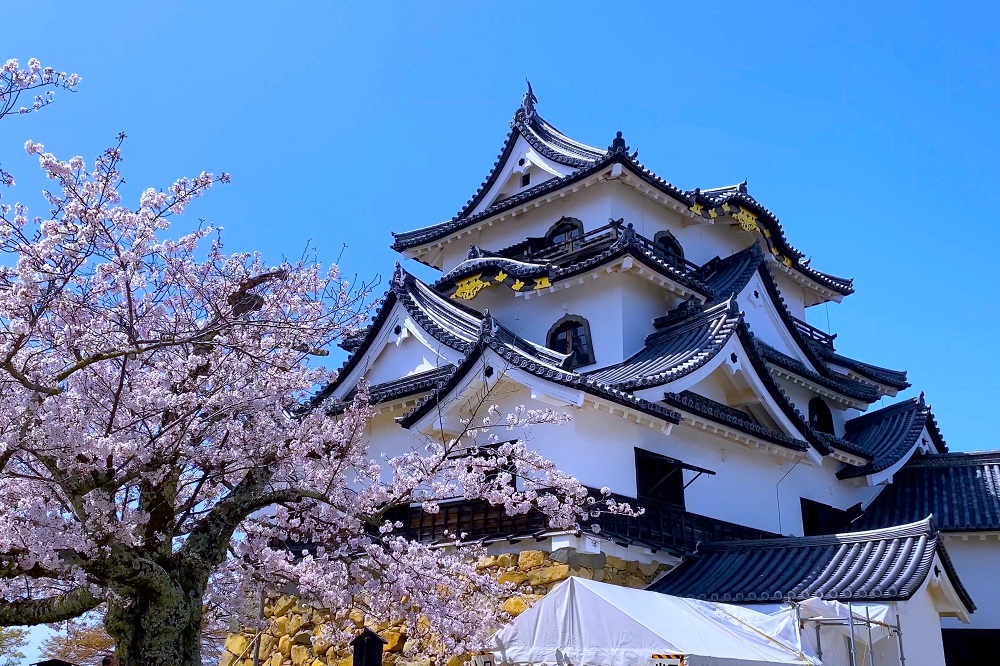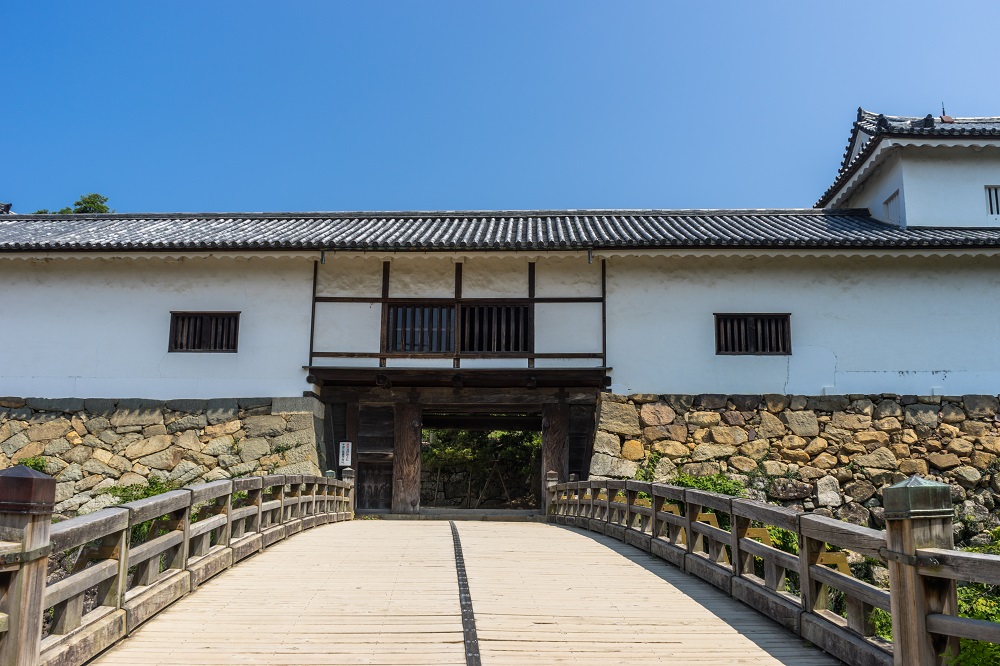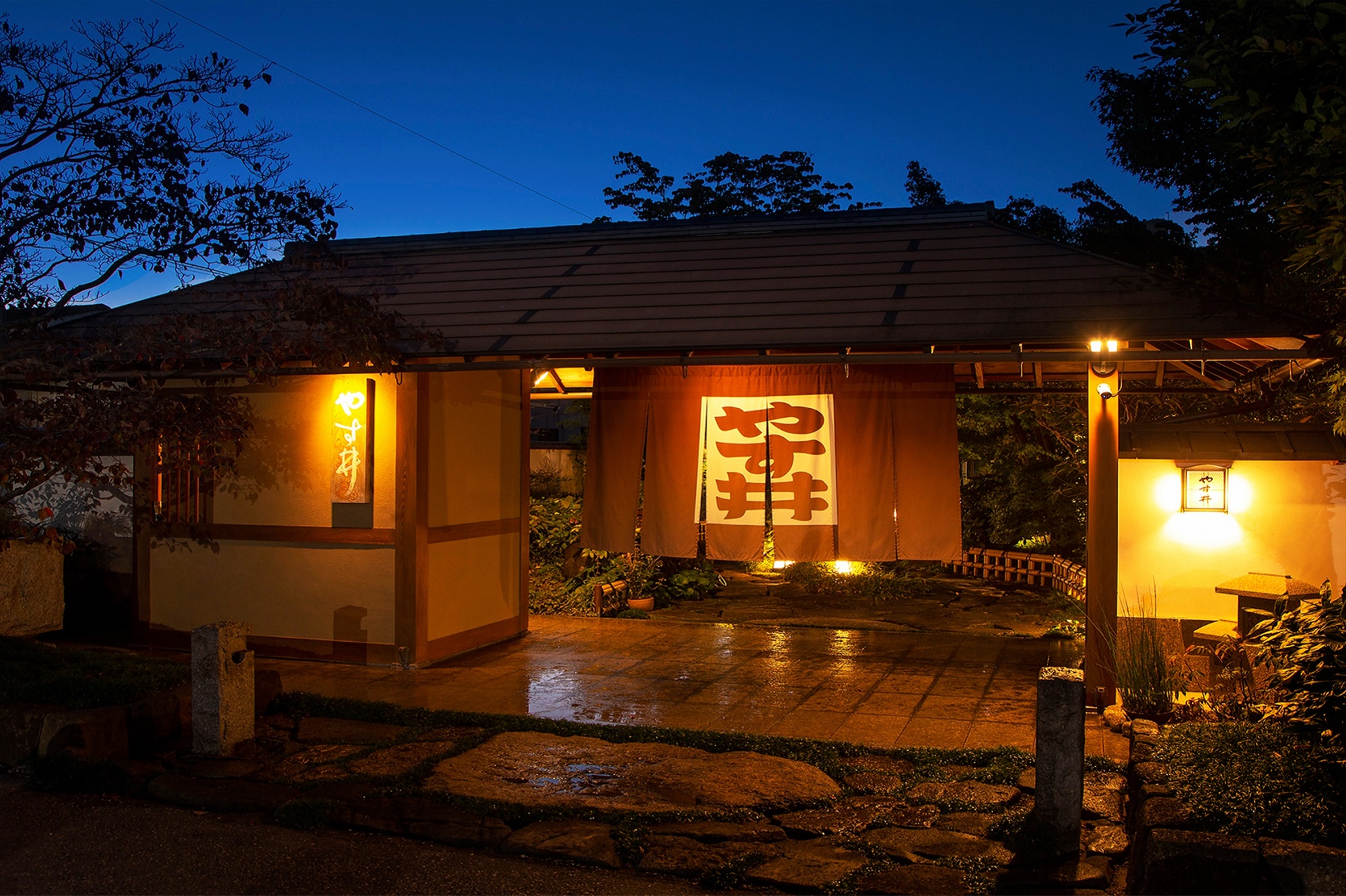Hikone Castle / 彦根城 (Shiga)
About Hikone Castle
Hikone Castle used to be the residence of the Feudal Lords "Ii Family", who held important positions in the Edo shogunate and supported the reign of the Tokugawa family. In 1604, by order of Tokugawa Ieyasu, construction of the castle started to supersede Sawayama Castle, previously served as the base for the Hikone area, was completed around 1622. Registered as a World Heritage Site, along with the Himeji Castle in Hyogo Prefecture, Hikone Castle is one of the five castles in Japan having a keep designated as a National Treasure.

The Hikone area has been a strategic location for a long time due to the location at the crossroads of Tosendo Road [Nakasendo Road in the Edo Era], and Hokuriku Road [Hokkoku-Kaido in the Edo Era]. Up until the Warring States Era, Sawayama Castle served as the base castle, and in the Edo Era construction of Hikone Castle started under the order of Tokugawa Ieyasu (1533-1616), as a strategy to wipe out Sawayama Castle. The construction of Hikone Castle was initially led by the Shogunate, and by 1607, the main parts of the castle were built in anticipation of warfare. After the Summer Siege of Osaka in 1615, the Ii family took the lead in building the Omote Goten [the "Front Castle"], and developing the castle town, creating a city for samurai and townspeople alike. Hikone Castle also housed the largest stockpile of rice for the Tokugawa military forces, and the troops of the Ii family served to fend off the surrounding area and forces in the western part of the region.

Although beloved by many and is the symbol of the Hikone City today, Hikone Castle was once on the brink of demolition during the Meiji Era (1868-1912). Amid this time of rapid modernization, castles started to be dismantled nationwide, and Hikone Castle was also scheduled for demolition. However, in 1878 (Meiji 11), when Meiji Emperor passed through Hikone on his way back from a tour of Hokuriku region, he ordered the Hikone Castle to be preserved, so the castle was spared from demolition.
There are various theories as to why the Emperor gave the order, including that Okuma Shigenobu (1838-1922; part of the entourage of the Emperor) was saddened at the thought of Hikone Castle being lost, or that Kaneko, the cousin of the Emperor, and wife of the temple keeper of Fukuda Temple of Nagasawa, Omi-machi, where the Emperor stopped for respite and petitioned for preservation of the Hikone Castle.

The castle keeps Hikone Castle, annexed turrets [Tsuke Yagura], and the multi-story gate turrets [Tamon Yagura] are all designated as National Treasures in 1952. The main keep, consisting of three stories and a triple-layer roof, has a beautiful and varied appearance with an emphasis on the exterior. It is said to have been relocated from Otsu Castle, magnificent to behold, and excels in the original function as a military stronghold. In addition to the three National Treasures [of the castle keep, the annexed turrets, and the multi-story gate turrets], many other buildings that are high historically valued have been designated as the Important Cultural properties, starting with the Nishinomaru three story turret; once played a crucial part as the key to defense against enemy attacks from the west, Drum Gate Turret [Taiko-mon Yagura] and Tsuzuki-Yagura [linking turrets] that ominously guards the main entrance to the castle, and the Tembin turret [Balance Turret]; an important post that prevented enemies from penetrating the Honmaru Goten [main castle]. Genkyūen Garden that encircles the castle is a traditional Japanese garden designated as a national place of scenic beauty.
Getting there and around
by Train
■From Tokyo and Nagoya
Take the Tokaido Shinkansen (Bullet Train) to JR Maibara Station, transfer to the JR Biwako Line and disembark at JR Hikone Station. Approx. 15min walk from JR Hikone Station.
■From Osaka and Kyoto Take the JR Biwako Line and disembark at JR Hikone Station. Approx. 15 min walk from JR Hikone Station.
by Bus
Embark the "Round Route Bus" circling around the Hikone Castle and JR Hikone Station is available to explore the city.
*Day passes are also available.
Recommendations
Genkyūen Garden and Rakuraku-en Villa / 玄宮楽々園
Genkyūen Garden is a beautiful pleasure garden beside the residence of the castle lord, established by Ii Naoki, the fourth lord of the Hikone domain. In the past, Ninomaru Goten ["Rakuraku-en Villa" today] was used to be called "Tsuki Goten" [Moon Palace], and the garden surrounding the palace ["Genkyūen Garden" today] was used to be called "Tsuki-no-oniwa" [Moon Garden]. The garden is designated as a national palace of scenic beauty, and visitors admire the charming trees and flowers revealing different phases throughout the changing of the seasons, the most memorable one being the vivid colors of autumn.

Hosho-dai Guest House / 鳳翔台
The lords of the Hikone Clan entertained their most prominent guests at the guest house, known as "Hosho-dai", meaning "The place where the phoenix whirls up in the sky". Located on the small hill, overlooking "Genkyūen Garden" and the main keep of the castle. A mild green tea and "wagashi" [Japanese sweets] are served to visitors at the guest house.

Drum Turret [Taikomon Yagura] / 太鼓門櫓
The Drum Turret [Taikomon Yagura] forms the last gate leading to the main bailey [an enclosed courtyard], and is named after housing a great drum, used for communication across the castle grounds. When the gate was dismantled and repaired, there was the fact that the turret was relocated from another castle, but it was not known which one. The Drum Turret [Taikomon Yagura] is designated as a National Important Cultural Property of Japan.

Travel Recommendations
The Main Keep [Tenshu] of Hikone Castle is an ideal place for visitors to admire breathtaking scenery at any time of the year. In springtime, when the awakening 1,100 cherry trees of eight varieties bloom and enjoy the castle lit up at night at all its glory. On limited dates, the castle is open to the public for nighttime viewing in a way not normally possible. Castle enthusiasts simply cannot miss such an opportunity. Check the official website of the Hikone Castle for the latest information on this special event.
Accommodations
Ryotei Ryokan YASUI / 料亭旅館やす井 (Shiga)
13-26 Yasukiyo-cho, Hikone, Shiga
Established in 1869, Ryotei Ryokan YASUI is a Japanese Restaurant and Ryokan with a history of over 150 years, located near the National Treasure Hikone Castle. Step onto the grounds and find over 1,300㎡ of well maintained, beautifully landscaped Jap....

